
If you’ve been reading our blogs, by now you know that Gogimgoi is the Artistically Geeky Design House committed to the study of colors and humor and inspired by nature. We are mesmerized by the beauty found on this earth and amazed by the incredible, colorful, wonderful creatures that populate it.
To help you understand what motivates our designs, we’ve been creating Gogimogi lists. So far we’ve released our Top 10 Most Beautiful Insects, and our Top 10 Most Fascinating Birds.

Now, we want to take you to the sea and show you Gogimogi’s Top 15 Most Gorgeous Fish.
We are always careful to acknowledge the subjectivity of our lists, as beauty is often in the eyes of the beholder. But even if you don’t agree that some of these fish are “gorgeous” we are certain you will find them amazing nonetheless.
Here is Gogimogi’s Top 15 Most Gorgeous Fish List in no specific order. As always, we would love to hear from you and find out which ones on this list are your favorite and why.
The Emperor Angelfish

The emperor angelfish is a species of reef fish native to the Indian and Pacific Oceans.

The juvenile emperor angelfish looks different from the adult. Juveniles have brilliant, electric blue and whitish-yellow rings while the adults have yellow and blue stripes with a black mask around their eyes.

It takes about 30 months for the emperor angelfish to get its adult coloring, although this may not always happen when they’re in an aquarium.

Emperor angelfish are omnivorous with their favorite food being sponges and algae.
The Parrotfish
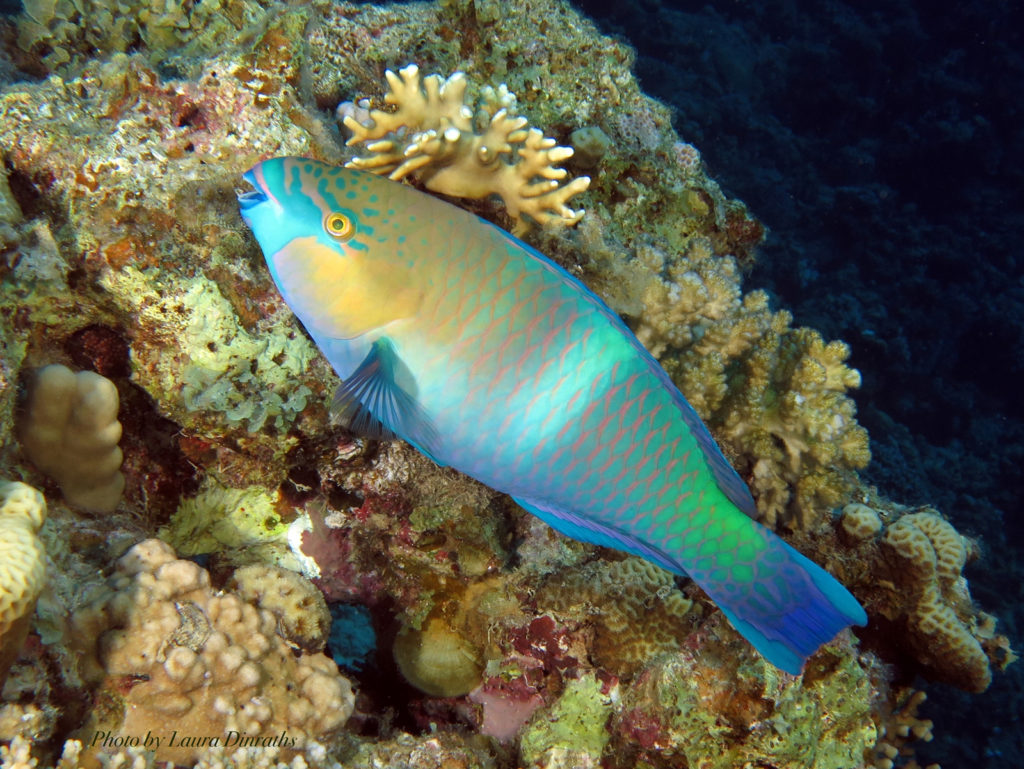
The parrotfish earned their name thanks to the way their teeth are arranged on the outer surface of their jaw bones, giving them a parrot-like beak.

There are about 95 species of parrotfish. They usually swim in tropical and subtropical shallow waters. Their sizes range from 5.1 inches all the way to 3’3” depending on the specie. They have a pretty complex life cycle with most of the species being sequential hermaphrodites, meaning they start out as females but then change to males.
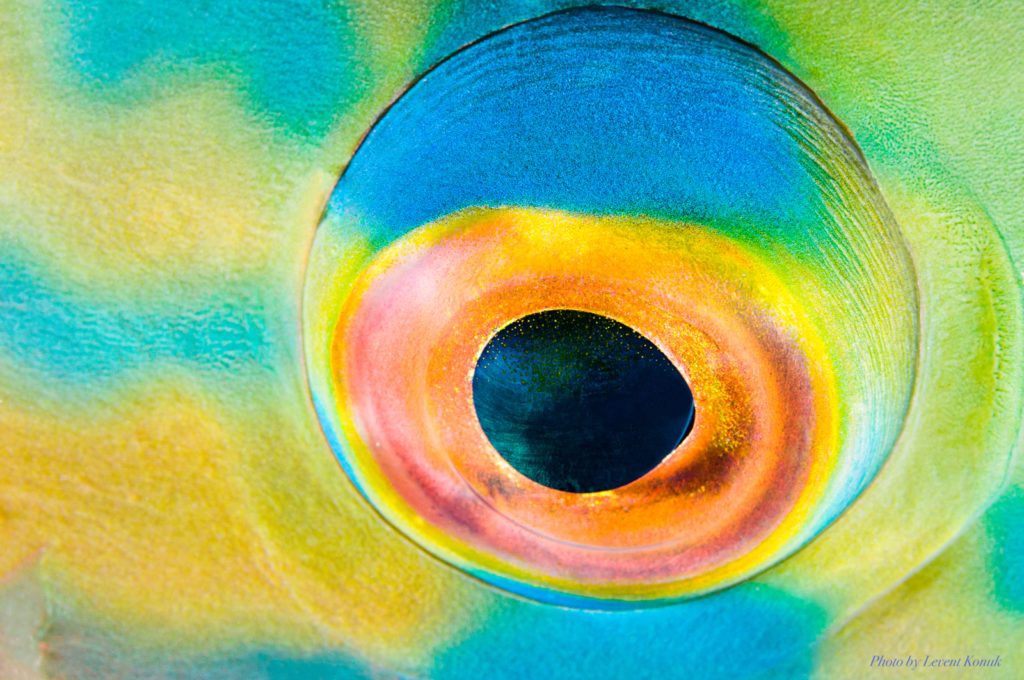
In most species their female coloring is dull red, brown or grey, but then they change into vivid green or blue with bright pink or yellow patches when they become males.

A recent study has discovered that the parrotfish is critical to the health of the Great Barrier Reef. It is the only reef fish that scrapes and cleans inshore coral reefs.
The Siamese Fighting Fish

The Betta splendens, known as the Siamese fighting fish, belong to the gourami family of fish. They are very popular among aquarium enthusiasts. Native to the Mekong basin of Laos, Cambodia, Vietnam and Thailand, these fish grow to be about two and half inches long.

In the wild their colorings are dull green, brown and grey and their fins remain fairly short. In captivity, however, breeders have created a large variety of colors and tail types through selective breeding. Common colors include red, blue, green, yellow, opaque, black, white and orange. Other interesting colors include turquoise, copper and lavender.
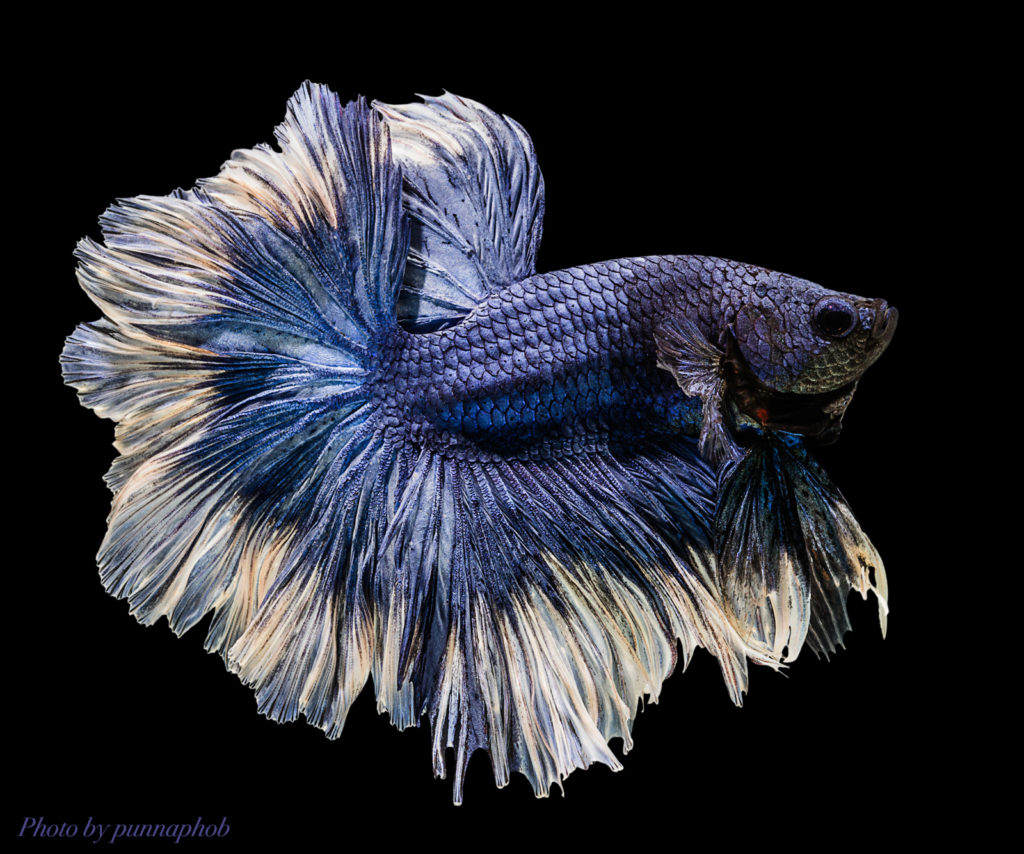
As their name suggests, the siamese fighting fish are very territorial and males should not be kept in the same tank together. They should also be kept in large tanks of at least 10 gallons as they need to establish territory and can become aggressive towards intruders.

The Betta has a very interesting mating ritual. Males flare their gills and spread their fins and dance for a female they’re interested in. If the female is interested, she will darken in color and display vertical lines indicating her willingness to mate. Males will build bubble nests on the surface of the water. The male wraps his body around the female in a “nuptial embrace.” Fertilization happens externally with the female releasing her eggs and the male his milt into the water. After mating, the male chases the female away as she will likely devour the eggs. In captivity, she should be removed from the tank, otherwise the male is likely to kill her. The male then takes care of the eggs, keeping them in the bubble nest and making sure to put back any fall to the bottom.

Historically, the Siamese fighting fish have been objects of gambling. Two male fish are pitted against each other to fight and bets are placed on which one will win. The fights can often result in severe injuries or even death of either one or both fish. Properly kept, the Siamese fighting fish can live between 3-5 years with some rare cases showing life-spans of 7-10 years.
The Moorish Idol Fish

The Moorish idol fish is another reef fish coveted by aquarium enthusiasts, even though they are extremely difficult to keep in captivity. Distributed throughout the Indian and Pacific Oceans, this fish got its name from the Moors of Africa who believed that the Moorish idol brought happiness.

They can grow to be a little over nine inches long and have eyes that are set high on their keeled bodies. They are omnivorous and feed off sponges, coral polyps and benthic invertebrates. They are spawners and release eggs and sperm into the water. Fertilized eggs then drift away with the currents.

Moorish idol fish are diurnal and spend most of their nights sleeping at the bottom of the reef.
The Discus

The symphysodon fish, known commonly as discus, is a cichlid fish native to the Amazon river in South America. They have a rounded, laterally compressed body with short fins which is how they’ve earned their name discus.
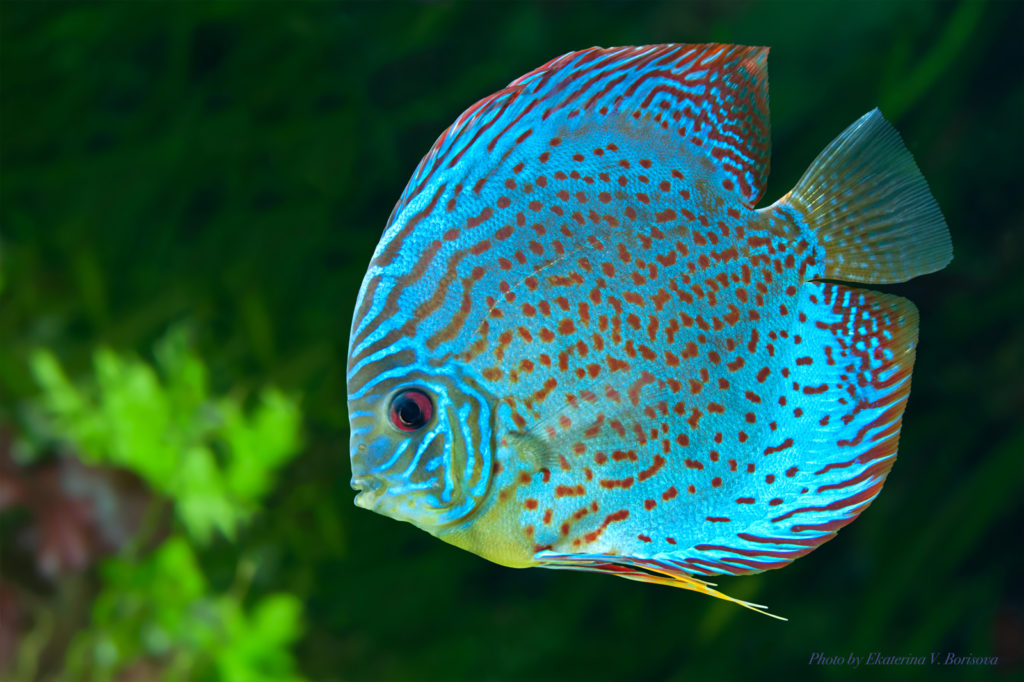
They can grow to be about six inches in the wild, although some have been known to reach nine inches in captivity. They are one of the more popular freshwater aquarium fish.

They are very social and usually occur in groups of many dozens. Male and females get away from the group when mating, most likely to keep their eggs from being eaten by the other fish.

Discus are very social and usually occur in groups of many dozens. Male and females get away from the group when mating, most likely to keep their eggs from being eaten by the other fish.

Both parents care for the eggs. They also secrete nutrients from their skin which the young feed off in their first four weeks. They eat mostly algae and other plants as well as invertebrates.
The Flowerhorn Cichlid

The flowerhorn cichlid is a fully man-made hybrid fish that do not exist in the wild. They are ornamental aquarium fish known for their head protuberance and vivid colors.

There is a lot of criticism surrounding the breeding of this fish and their introduction into the wild. They can be aggressive and breed rapidly (even though many male flowerhorns are sterile). The also compete with and eat native fish.

Other criticism includes, but is not limited to, unethical breeding for anatomical deformities. The flowerhorn cichlid have a life span of about 10-12 years but they can suffer from many diseases.
The Pacific Regal Blue Tang

The paracanthurus hepatus goes by many common names including the regal tang, the palette surgeonfish, the blue tang, the royal blue tang, the hippo tang, the flagtail surgeonfish, the Pacific regal blue tang and the blue surgeonfish. It is distributed in the Indian and Pacific oceans and can grow to be about 12 inches long. They live in pairs or small groups of 8-14 fish. When threatened, the regal tang can make itself semi-transparent.

The regal blue tang can cause ciguatera poisoning if consumed, but are popular aquarium fish even though they are fragile. As you may have guessed by now, Dory in Disney/Pixar’s Finding Nemo and Finding Dory is a regal blue tang.
The Picasso Triggerfish

The gorgeous and poetically named Picasso triggerfish goes by many names including lagoon triggerfish, blackbar triggerfish, and the Jamal. It is the state fish of Hawaii where it is called the humuhumunukunukuāpua’a.

They are territorial fish and can protect their region aggressively against intruders. They grow to be approximately 11 inches long and mate multiple times throughout their lifetime.

Spawning takes place at sunrise and the eggs hatch at sunset on the same day. Their lifespan is between 5 to 10 years.
The Mandarinffish

The tiny colorful mandarinfish is native to the Pacific ocean, ranging from the Ryukyu Islands to Australia. They grow to slightly above two inches and earn their name because their vivid colors and marking are said to resemble the extravagant robes of an Imperial Chinese mandarin.

They are reef dwellers and bottom-feeders that eat mostly during the day. They also have a layer of smelly and bitter slime on their skin, instead of scales, which keeps diseases and predators at bay. They are popular in the aquarium trade, but difficult to keep because of their feeding habits.
The Blueface Angelfish

This laterally compressed colorful fish is found in the shallow parts of the Indo-Pacific. It grows to about 15 inches and swims near caves and reefs in waters that are between 15 to 80 feet deep.

The juveniles have a very different coloring than the adults and start changing once they reach 7 inches. Their lifespan is 10 years or more.
Koi
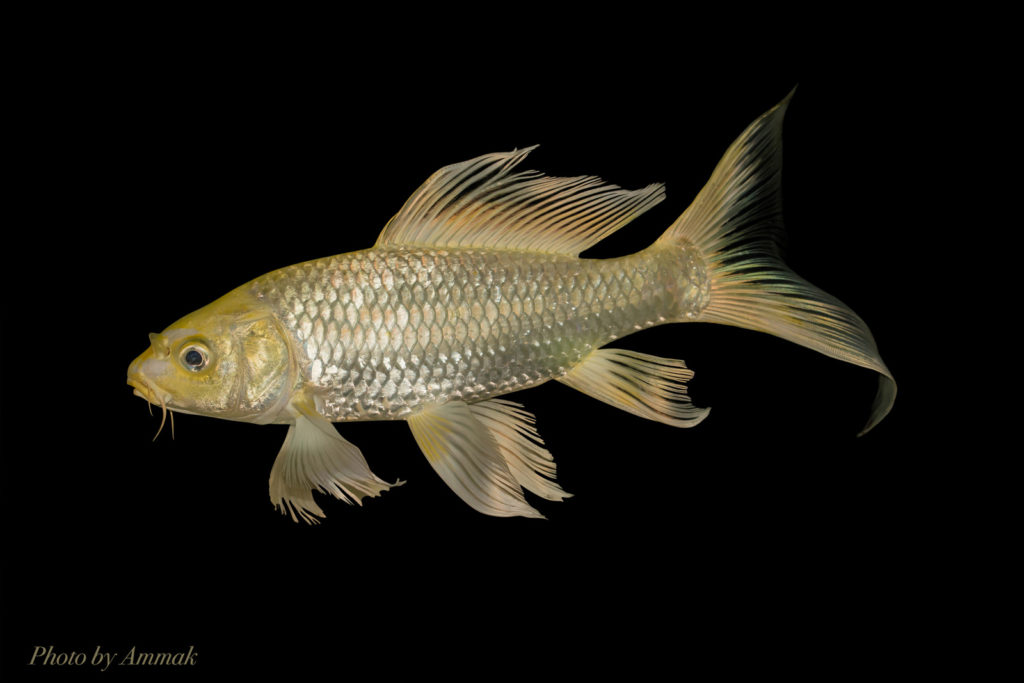
Koi fish are ornamental varieties of domesticated carp fish. The Chinese started to breed the Prussian carp fish more than a 1000 years ago which lead to the development of the Goldfish. Koi, on the other hand, were developed in Japan in the 1820s by selective breeding of the common carp.

In general, goldfish are smaller than koi and have a greater variety of body shapes and fin and tail configurations. koi have a common body shape, but more variety in patterns and coloration. Some major koi colors include white, black, red, yellow, blue and cream. Similar to the carp fish, koi are healthy fish and there are some reports that claim kois have reached ages of 100 to 200 years, although the average life-span is around 50 years

Like most fish, koi reproduce through spawning with the female laying eggs that are then fertilized externally by one or more males. Even though koi fish produce thousands of offspring from a single spawning, most of these offspring will not be acceptable to breeders because they won’t display interesting colors or may even be genetically defective.

These rejected Koi are either killed off or used as feeder fish. Koi have many symbolic meanings in Japanese, Chinese and Korean cultures, from good luck to perseverance against adversaries to a symbol of male masculinity, to love and friendship. That’s why koi are extremely popular fish that are often kept in outdoor koi ponds or water gardens.
The Lionfish

The lionfish is a poisonous fish with elaborate fins, tentacles and vibrant coloring that is native to the Indo-Pacific waters. It has many names, including butterfly-cod, zebrafish, firefish and turkeyfish.

Recently some lionfish have become invasive species in the Atlantic Ocean, Caribbean Sea and Mediterranean Sea, posing a threat to these region’s reefs.

They are aposematic. Their showy fins, projecting spines and conspicuous contrasting stripes serve to ward off predators effectively.

In humans, their venom can cause pain, nausea, dizziness and vomiting, fever, convulsions, headaches, heartburn, diarrhea and other symptoms. In rare cases, it can even cause death. The lionfish’s diet consists of small fish, invertebrates and mollusks. Their lifespan is anywhere between 5 to 15 years.
The Clown Triggerfish

The clown triggerfish also goes by the name bigspotted triggerfish and is native to the tropical and subtropical waters of the Indian Ocean and the western Pacific Ocean, although it can also be found in the Caribbean.
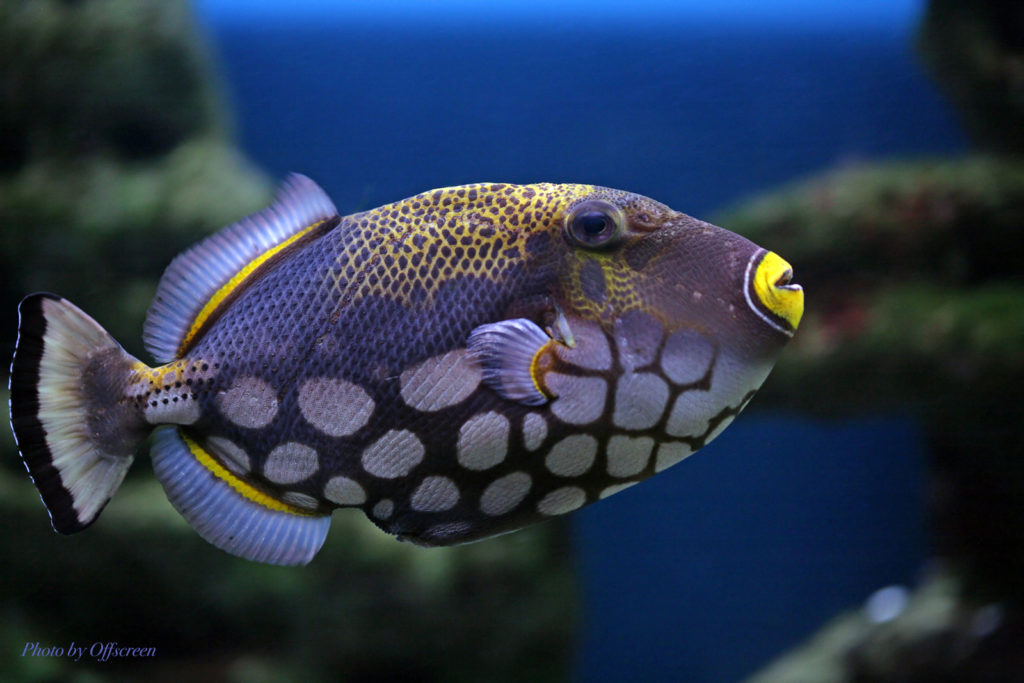
It has a big head that makes up 1/3 of its body. It is laterally compressed with a stocky appearance and an oval shape. Because of its attractive patterns and coloration, the clown triggerfish is very popular in the aquarium trade. It is a diurnal fish, meaning it is active during the day and sleeps at night. It is territorial and can be aggressive towards other fish. The clown triggerfish has a lifespan of 10-12 years.
The Clownfish

The clownfish or anemonefish, is probably one of the most recognizable fish on this list thanks to Disney/Pixar’s famous movie Finding Nemo. There are about thirty species of clownfish with most exhibiting orange, yellow, reddish or black coloring with white bars or patches.

In the wild, the clownfish usually forms a symbiotic relationship with sea anemone whereby the clownfish eats the invertebrates that can cause the anemone harm while providing nutrients through its fecal matter. The clownfish is a fairly small fish ranging in size from 3.9 inches to 7.1 inches. Clownfish are sequential hermaphrodites, meaning they develop into males first then become female once they mature.
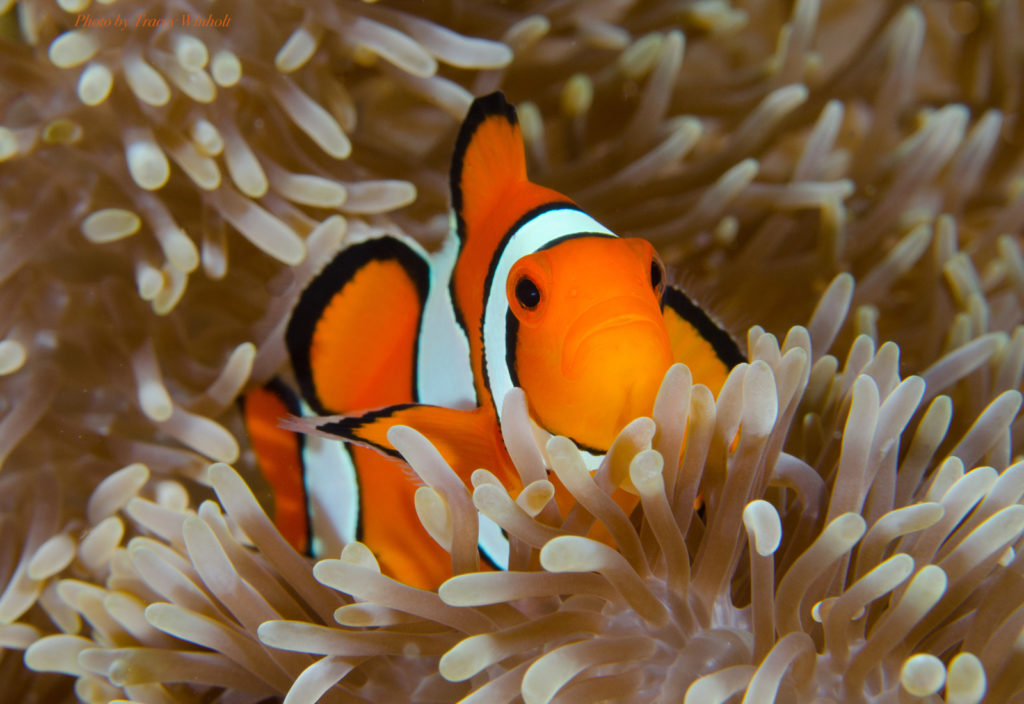
There is a clear hierarchy in clownfish colonies with the most aggressive female at the top and only one female and one male reproducing. If the female in the group is removed or dies, the largest and most dominant male-usually the breeding male-becomes a female and the strongest and largest juvenile becomes the new breeding male. At that time, all remaining males will move up a rank in the hierarchy. Even though multiple males live with a single female in a colony, polygamy does not occur. Clownfish have a lifespan of 3-6 years
The Asian Arowana

The Asian Arowana is also known as the Asian bonytongue and dragonfish thanks to their resemblance to the Chinese dragon. They inhabit blackwater rivers and slow-moving waters in forests and wetlands. They grow to be about 35 inches long and come in a variety of colors each specific to a particular geographic region.

These varieties include but are not limited to green, silver Asian, red-tailed golden and super red. The bodies of the Asian arowana is long. They have large scaled that in some varieties are metallic with a mosaic pattern of raised ribs. They have teeth on their jaws and tongue.

They reach sexual maturity late in life, after the age of three. The female produces 30-100 large eggs and the male broods the fertilized and larvae eggs in his mouth.

Because of their dragon-like appearance, Asian arowanas are symbols of good luck and prosperity in Asian cultures. Folklore also says that they can preserve the lives of their owners by dying in their stead. The Asian arowana is listed as endangered.
In addition to these gorgeous fish, we came across many others that deserve honorable mention here. These include:
The Banggai Cardinalfish

The Glass Catfish

The Red Tail Triggerfish
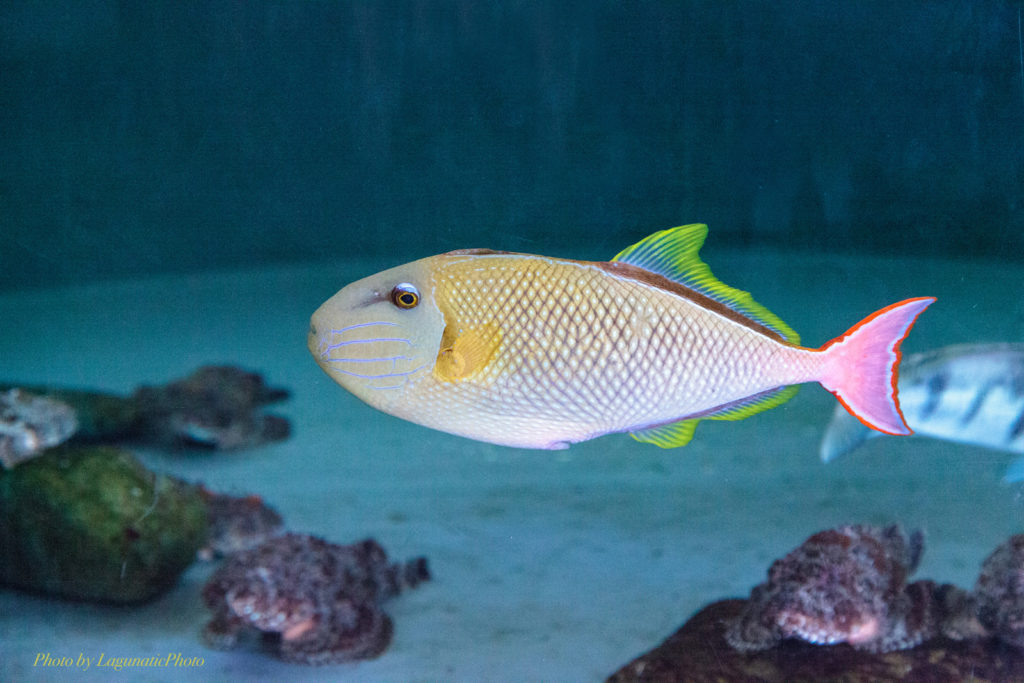
The Indian Ocean Oriental Sweetlips

The Cockatoo Dwarf Cichlid

The Harlequin Tuskfish

The Scribbled Rabbitfish

The Blue Lyretail

The Sargassum Triggerfish

The Sea Goldie

The African Jewelfish

The Ram Cichlid

The Arabian Angelfish

The Humphead Wrasse

The Kribensis

As you can imagine, this list does nothing but pique our curiosity to learn more about the many amazing animals that inhabit our waters. So, very soon, we’ll be releasing our list of the most bizarre underwater creatures.
For now, check out some of Gogimogi’s designs inspired by all the beauty in our magnificent world.

